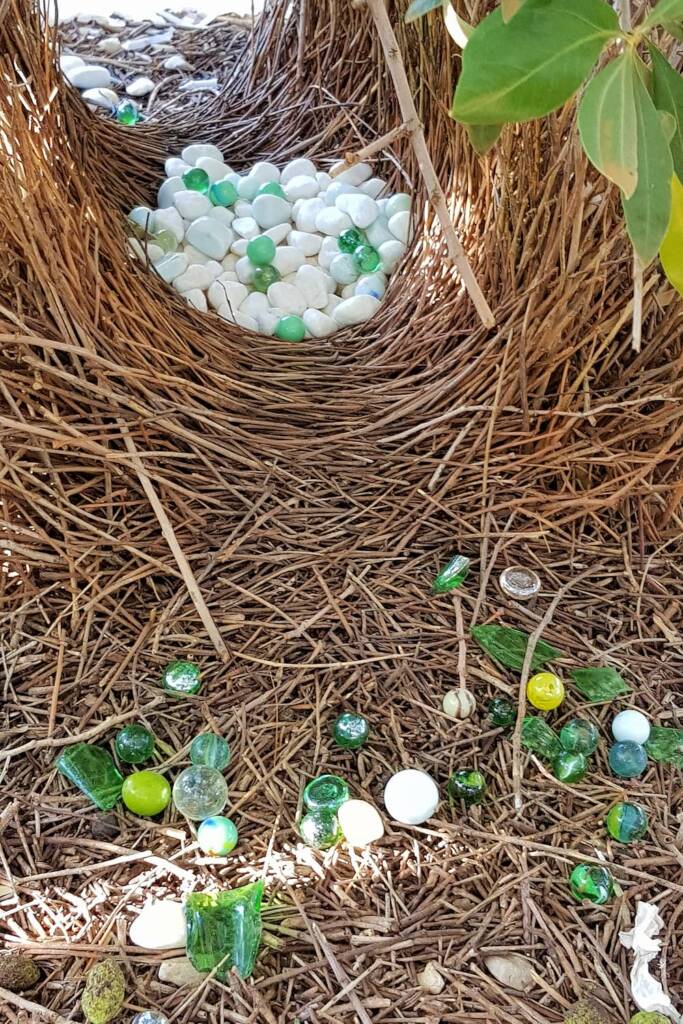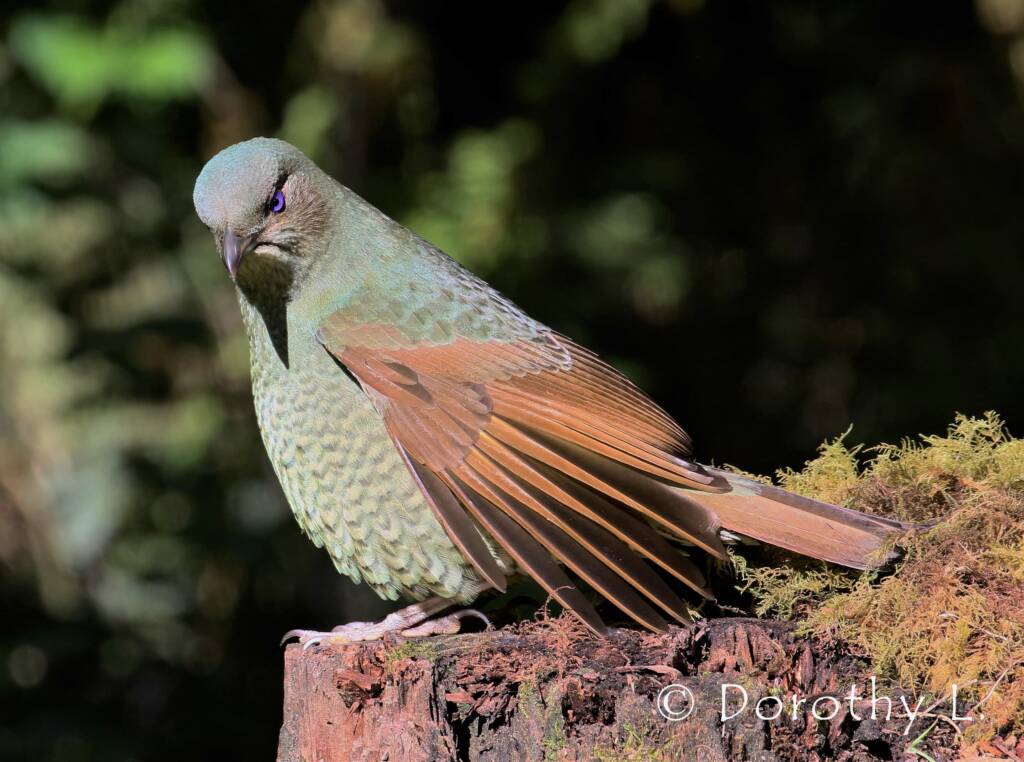BowerbirdsGreat Bowerbird Green Catbird Satin Bowerbird Western Bowerbird
The wonderful Bowerbirds are known for the male bird’s elaborate courtship rituals and seduction techniques that involves building a structure known as a bower decorating it with objects in their efforts to attract a mate.
Bowerbirds are polyandrous (meaning that several females mate with one male), with the exception of the Catbird who are monogamous. Once mating has occurred, male bowerbirds play no role in raising young.
Bowerbirds, together with the Birds of paradise was discussed by the Naturalist Charles Darwin, because they provided extreme examples of sexual selection. Today, the bowerbirds attract considerable scientific interest because of other animal behaviours, such as seen with the male bowerbird decorating their bowers with objects of different colours and the performances of an intricate dance and the range of bird calls.
- Great Bowerbird (Chlamydera nuchalis)
- Green Catbird (Ailuroedus crassirostris)
- Satin Bowerbird (Ptilonorhynchus violaceus)
- Western Bowerbird (Chlamydera guttata)

The Western Bowerbird is heard to imitate cats, chainsaws and even other birds.

With twenty known species in eight genera, they are endemic in Australia and Papua New Guinea. With many species locate in the tropical regions, there are some species that live in the drier regions of Australia. The different species occupy a number of habitats that include rainforest, shrublands, eucalyptus and acacia forests.

The better known bowerbird include the Spotted Bowerbird, the Satin Bowerbird, the Great Bowerbird and the Green Catbird (which is the only bowerbird that does not build a bower). Instead, the male Green Catbird will clear an area for a performance and to display to other females. Like other male bower birds, they will attempt to attract the females by having displays of colourful fruits, flowers and leaves.

- Scientific classification
- Kingdom: Animalia
- Phylum: Chordata
- Class: Aves
- Order: Passeriformes
- Parvorder: Corvida
- Superfamily: Menuroidea
- Family: Ptilonorhynchidae
- Genera:
— Ailuroedus
— Amblyornis
— Archboldia
— Chlamydera
— Prionodura
— Ptilonorhynchus
— Scenopooetes
— Sericulus

Footnote & References
- Build It {and they will come}, by Virginia Morell, July 2010, National Geographic Magazine, www.nationalgeographic.com/magazine/2010/07/bowerbirds/
- Field Guide to Australian Birds, by Michael Morcombe, Steve Parish Publishing, ISBN 9781740214179
- Bird Of The Week: Great and Western Bowerbird (Chlamydera nuchalis and Chlamydera guttata), Sundays with Annie Brown, ABC, www.abc.net.au/radio/darwin/programs/sundays/bower-birds/12474702
BowerbirdsGreat Bowerbird Green Catbird Satin Bowerbird Western Bowerbird
BirdsApostlebird Australasian Darter Australasian Figbird Australasian Gannet Australasian Grebe Australasian Pipit Australasian Robins Australasian Shoveler (Spatula rhynchotis) Australasian Wrens Australian Babblers Australian Bustard Australian Chats Australian Magpie Australian Pelican Australian Pratincole (Stiltia isabella) Australian White Ibis Bassian Thrush Black-faced Cormorant Black-faced Woodswallow Black Swan Bowerbirds Brolga Brown Songlark Channel-billed Cuckoo Cinnamon Quail-thrush Cormorants Cuckooshrikes and Allies Dotterels Lapwings Plovers Doves & Pigeons Emu Fairy Martin Finches Grey Fantail Grey Teal Honeyeaters Kingfishers Little Friarbird Little Grassbird Magpie-lark Masked Woodswallow Noisy Pitta Olive Whistler Paradise Riflebird Pardalotes Parrots Pheasant Coucal Pied Butcherbird Rainbow Bee-eater Raptors Rufous Fantail Redthroat Rufous Bristlebird Silver-crowned Friarbird Torresian Crow Waders Welcome Swallow (Hirundo neoxena) Whiskered Tern (Chlidonias hybrida) White-browed Woodswallow White Capped Noddy White-faced Heron White-necked Heron Willie Wagtail Yellow-throated Scrubwren
